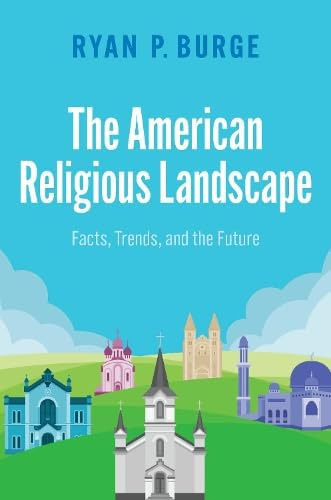Mayfly Meanderings on the Book—The American Religious Landscape: Part One
Part One on Meanderings One and Two
The American Religious Landscape—Part One on Meanderings One and Two
This is the first of a new series entitled Mayfly Meanderings. It refers to reflections on books, manuscripts, presentations, research, articles and other information and knowledge which I find interesting. I hope these lead to greater wisdom for you and me both.
(Note: The meanderings on this book will involve multiple posts as I like to keep these posts to 700 or so words. Look for these MM’s almost daily until I have finished posting on this book.)
Book: Ryan P. Burge. The American Religious Landscape: Facts, Trends, and the Future. New York: Oxford University Press, 2025. See this book HERE.
MM One—More Than Survey Research: When it comes to the mission of the Christian movement, while I love and appreciate survey research and understand its great value, I have been over the past 50 years primarily a missional strategist. Survey research often points me in the right direction so I can engage in fixin’ to get ready to commence to begin to start to do something maybe to understand what effective strategies might look like in a given situation. But it is not enough. Nor is it intended to be enough.
It can be a starting point or at least a partner in revealing effective strategy. Wisdom is knowing what else is needed to engage in and experience effective Christian missional strategy, and what it means.
Several decades ago, I was on the national missions staff of my denomination of heritage—Southern Baptists. As I like to say, “It was back in the good ol’ days.” I worked in metropolitan areas throughout the USA whose population was one million or more, or who were projected to be one million or more by the year 2000. There were 50 of them in the continental United States.
One strategy focused on launching new congregations. To figure out how and among whom took as much cultural, on-site engagement as it did traditional research. Reports could generally be found that showed the major demographic categories of people. At least those which appear in official reports and documents.
Typically, It took a couple of rounds of on-site digging and networking to discover who and where the preChristians, unchurched, underchurched, and dechurched people lived, worked, and played.
Particularly when it came to non-English and/or non-Anglos it took the form of relational and networking research. Once we had a reasonable awareness of what people groups might be present in the area, we sent in teams of people who were from those various people groups.
They stayed for multiple weeks making contacts, getting to the know the people, and presenting a Christian witness to them. At times they discovered micro-congregations or other organized evangelical Christian gatherings already in existence. Beyond this they were able to empower gatherings for Bible studies and worship during this short period.
It was not just academic research, but the catalytic movement of the Christian mission.
Which leads me to my second meandering about this book.
MM Two—The Limits of Survey Research: Survey research, as valuable as it is to show macro-trends, has significant limits. This is no surprise to those who engage in survey research, report on it, and use it in their ministry. Ryan Burge acknowledges this in several places in this book:
“A common theme throughout this volume is the difficulty of measuring religion.” [90]
“Survey data are obviously imperfect, but they are the only means that we have in the social sciences to try and show readers what American society looks like in broad swaths.” [1]
“One point that needs to be stressed when working with data is that no single survey or census is well-suited to answer every question.” [26]
Ryan uses multiple surveys to show us the macro-trends of religion in America. Some of the surveys use different criteria and categories. You must realize multiple approaches—apples, oranges, bananas, pears, etc.—are utilized to provide a composite of the American landscape.
One source Ryan uses for a foundation is the wonderful book by Roger Finke and Rodney Stark—The Churching of America, 1776-2005 — HERE. I have been around a long time, so I used their first edition of the assessment, The Churching of America, 1776-1990 — HERE, beginning more than 30 years ago. I commend both of these resources to you.
My key point is not to say anything negative about survey research. It is simply to say you need to recognize it for its value and understand its limitations. As with MM One above, it is not the answer to the need for contextual, grassroots, micro strategies, but it will help you get there.
Next: MM Three on the Decline in Christianity. MM Four on the Rise of Non-Denominationalism. MM Five on Evangelical Trends.
OR . . .


